![]()
![]()
![]()
Use LEFT and RIGHT arrow keys to navigate between flashcards;
Use UP and DOWN arrow keys to flip the card;
H to show hint;
A reads text to speech;
23 Cards in this Set
- Front
- Back
|
Cerebellum |
- movement modulation: rate, range, F, direction - influence exerted ipsilaterally / bilaterally - also potentially involved in learning & memory |
|

|
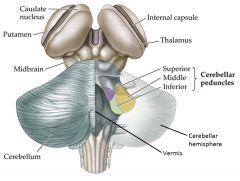
|
|
|
Cerebellar peduncles |
Superior (brachium conjuctivum): -> midbrain (-> Red nu. & VL/VA, Thalamus, contralateral) Middle (brachium pontis): <- pons (<- CC) Inferior (restiform body): <-> medulla & SC |
|
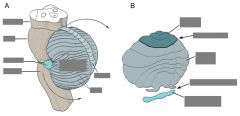
|
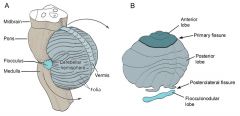
|
|

|

|
|
|
Functional subdivisions of cerebellum |
Flocculonodular l. = Vestibulo/archicerebellum <- vestibular fxn: balance, eye stabilization during head movement Vermis + Intermediate zone = Spinocerebellum <- SC: m. tone & movement adjustement Cerebro/ponto/neocerebellum <- pons <- contralateral CC: planning, initiation, learning of new movements; cognitive fxns |
|
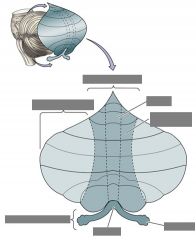
|
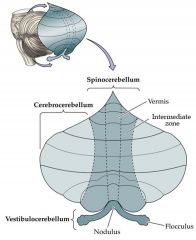
|
|
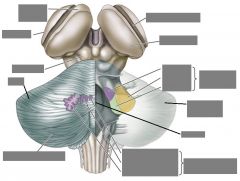
|
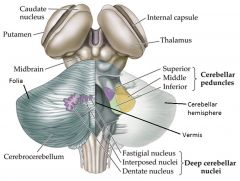
|
|
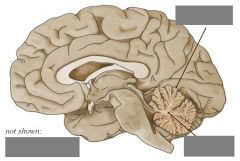
|
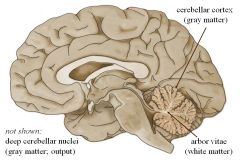
|
|
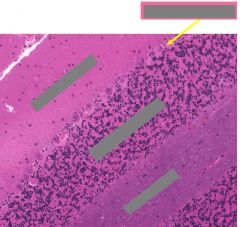
|
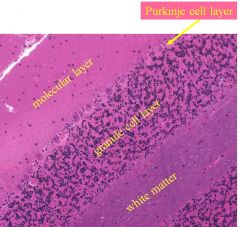
|
|

|

|
|
|
Cerebellar cortical cells |
- all cells use GABA (exc. granule cells: Glu) - Purkinje cell axons = the only cortical output -> deep cerebellar / vestibular nucleus - granule cells (most abundant in brain) -> PC - Mossy fiber = cerebellar input -> granule cells - Climbing fiber = direct PC input <-inferior olive - Golgi, basket & stellate cells: inhibitory IN's |
|
|
Cerebellar circuits = inhibitory sculpting |
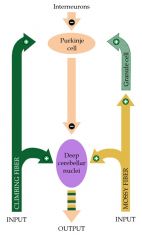
|
|
|
Synaptic plasticity |
- parallel fibers -> PC's ~ plastic - short-term & long-term plasticity & synapses - effect on PC's: climbing fiber >>> parallel fibers - parallel+climbing(error)=>synaptic depression - |
|
|
Synaptic depression |
- parallel fibers ~ Glu -> AMPA & mGluR on PC - climbing fibers = error message: Asp -> PC excitation & Ca channels open -> ↑ Ca -> PKC --| AMPA: (Pi) & ↓# => if parallel fiber active simultaneously -> weakened [example: VOR, vestibulo-ocular reflex gain Δ] |
|
|
Vestibulocerebellum |
<- inferior peduncle <- vestibular apparatus & nu (ipsilateral) - regulates balance & eye reflex movements PC's -> inferior peduncles (directly) -> vestibular nuclei -> vestibulospinal tracts => cerebellar regulation of postular movements, VOR |
|
|
VOR (Vestibulo-ocular reflex) |
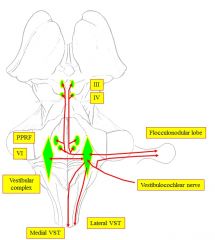
|
|
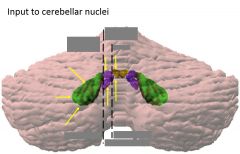
|
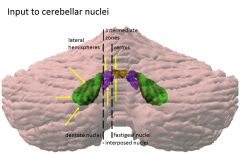
|
|
|
Spinocerebellum: input & processing |
<- inferior peduncle <- SC (spinocerebellar pwy's) - adjusts ongoing movements & controls m. tone (proprioceptive/visual/auditory, ipsilateral) - somatotopic organization: vermis ~ trunk mm., intermiediate zones ~ limb mm. |
|
|
Spinocerebellum: output from vermis |
vermis -> fastigial nucleus -> inferior c. peduncle -> brain stem (bilateral): vestibular nuclei, reticular formation => modulates descending pwy's -> axial mm. (vestibulospinal/reticulospinal tracts; head/eye) -> superior c. peduncle -> thalamus -> motor C => corticospinal/corticobulbar tracts; axial, face |
|
|
Spinocerebellum: output from intermediate zone |
intermediate zone -> interposed nuclei -> superior c. peduncle (decussation) --> red nuclei --> VL, thalamus -> motor C => modulates limb mm. control (rubrospinal/lateral corticospinal tracts) [tracts decussate => ipsilateral control] |
|
|
Cerebrocerebellum: input & processing |
<- middle cerebellar peduncle <- pons (transverse pontine fibers, decussate) <- CC (sensory/motor/association C [corticopotine tract] - planning & initiation of skilled movements, learning (voluntary) |
|
|
Cerebrocerebellum: output |
cerebrocerebellum -> dentate nucleus -> superior c. peduncle (decussate) --> VL, thalamus -> motor/premotor C (dentothalamic fibers) => affects corticospinal/corticobulbar tracts -> modulates complex movements --> red nucleus -> inferior olive (dentatorubral fibers) -> inferior c. peduncle (=> learning fb) |

